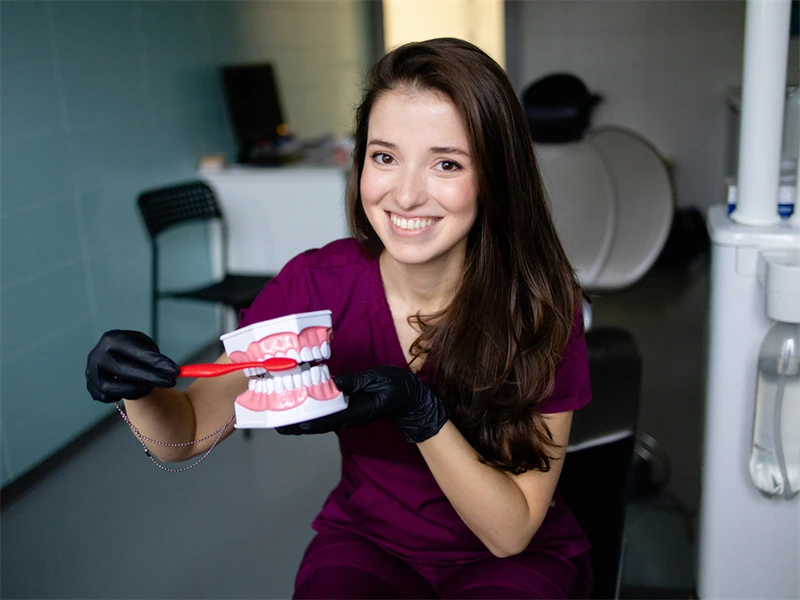When to use a space maintainer on teeth?

If your child is missing a baby tooth, a space maintainer can help keep the space open until the permanent tooth comes in.
A space maintainer is a small, custom-made appliance that is cemented or bonded to the teeth on either side of the space left by the missing tooth. The space maintainer holds the space open and prevents other teeth from moving into the empty space.
Space maintainers are usually made of stainless steel or clear plastic. They are comfortable and can be easily removed by your child's dentist when the permanent tooth comes in.
If your child does not have a space maintainer and a permanent tooth comes in before the baby tooth falls out, the permanent tooth may not have enough room to come in properly. This can cause the permanent tooth to be crooked or crowded.
If your child is missing a tooth, talk to your dentist about whether or not a space maintainer is right for your child.
There are two types of space maintainers: removable and fixed.
Removable space maintainers are less expensive than fixed space maintainers and can be taken out by the child for cleaning. They must be worn as directed by the dentist, typically all the time except when eating and brushing teeth. The major disadvantage to a removable space maintainer is that it can be misplaced or lost easily.
Fixed space maintainers are more expensive than removable space maintainers, but they are more durable and less likely to be misplaced. They are cemented into place by the dentist and can only be removed by the dentist. A fixed space maintainer is a good choice for a child who is not able to take good care of a removable appliance.
What is a space maintainer for teeth?
A space maintainer is a dental appliance used to hold the space in a child's mouth open after the loss of a primary tooth. The space maintainer helps prevent the other teeth from shifting into the empty space. Space maintainers are custom-made and are usually made of stainless steel or plastic.
Space maintainers are usually placed by a pediatric dentist or orthodontist. The type of space maintainer used depends on which tooth is missing. A band and loop space maintainer is used when the back teeth (molars) are missing. A bonded space maintainer is used when a front tooth (incisor) is missing.
The space maintainer is cemented or bonded to the teeth on either side of the empty space. The appliance is usually worn until the permanent tooth comes in, which is usually within 6 to 12 months.
It is important to take good care of the space maintainer. The appliance should be brushed with a toothbrush and toothpaste. The space maintainer should be kept clean and free of plaque and tartar.
Are space maintainers safe?
As a parent, you may be wondering if space maintainers are safe for your child. The answer is yes! Space maintainers are devices that are used to keep the space between a child's teeth open after a baby tooth has been removed. They are made of stainless steel and are custom-made for each child. Space maintainers are safe for children of all ages and are typically removed when the child's permanent teeth start to come in.
Do space maintainers cause tooth decay?
A space maintainer is a dental appliance that is used to keep the space between two teeth open after the baby tooth has fallen out. The American Academy of Pediatric Dentistry (AAPD) recommends that children have space maintainers placed if they have lost a tooth prematurely due to an accident or injury, tooth decay, or have had a tooth extracted due to overcrowding.
There is no definitive answer as to whether or not space maintainers cause tooth decay. However, it is important to keep the appliance clean and free of food debris to reduce the risk of decay. It is also important to continue to brush and floss regularly to keep the teeth and gums healthy.
How much does a spacer for teeth cost?
The cost of a spacer for teeth can vary depending on the type of spacer and the dentist. Generally, a simple plastic spacer can cost around $50, while a more complex metal spacer can cost up to $200. The best way to find out the cost of a spacer is to consult with a dentist.
Leave a Reply
Your email address will not be published. Required fields are marked *




One Comment
Make sure to replace your toothbrush every three months or when it begins to show wear, whichever comes first.
Reply